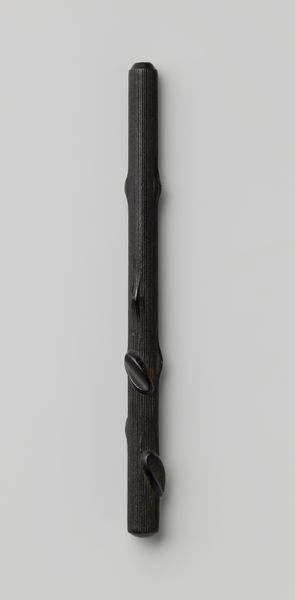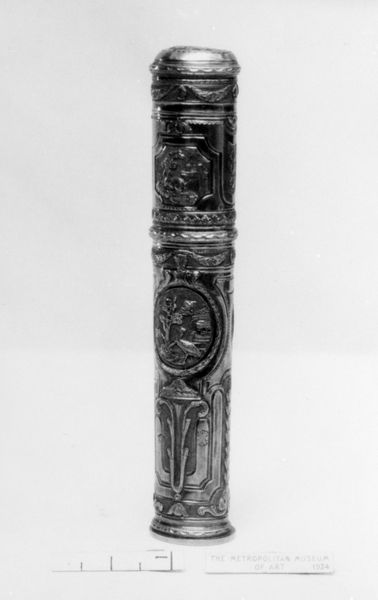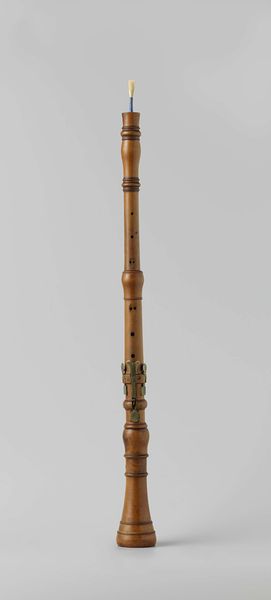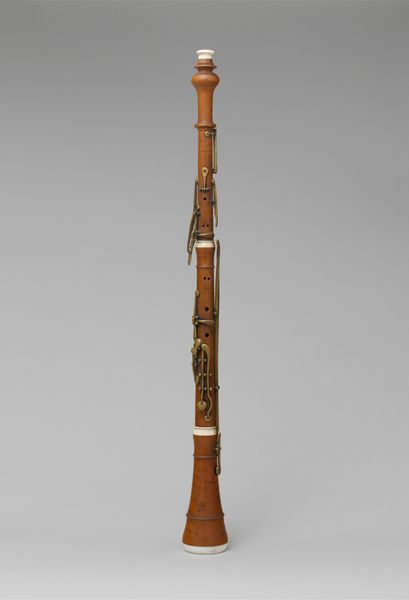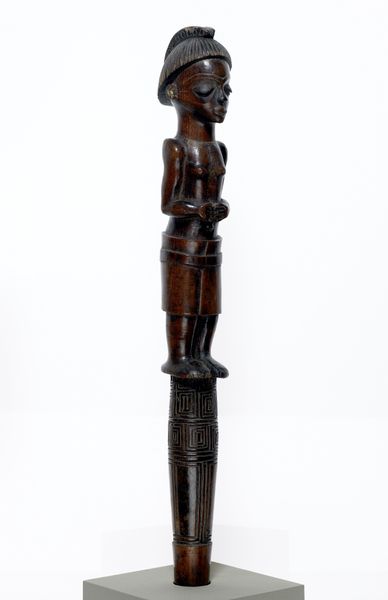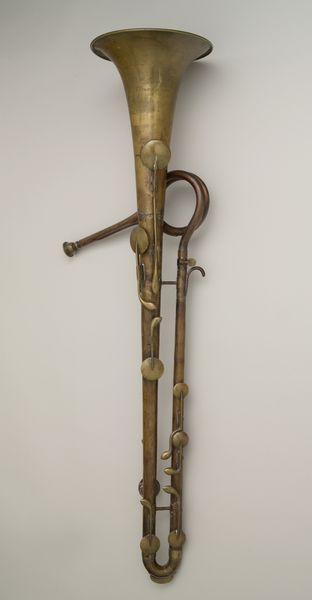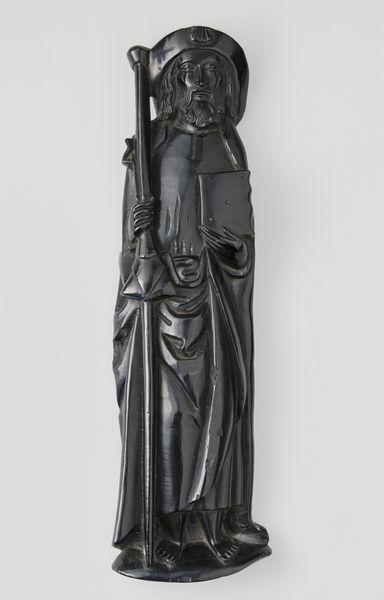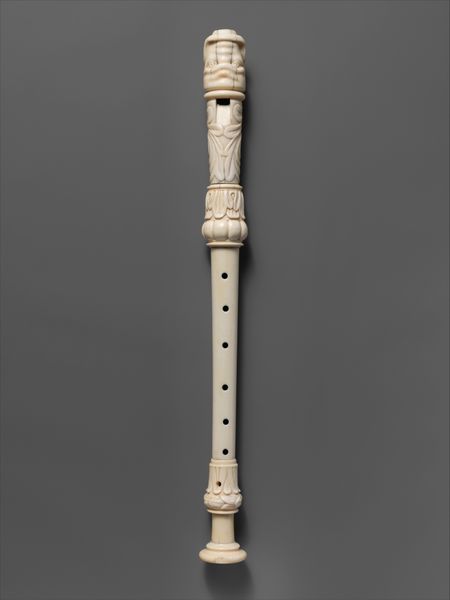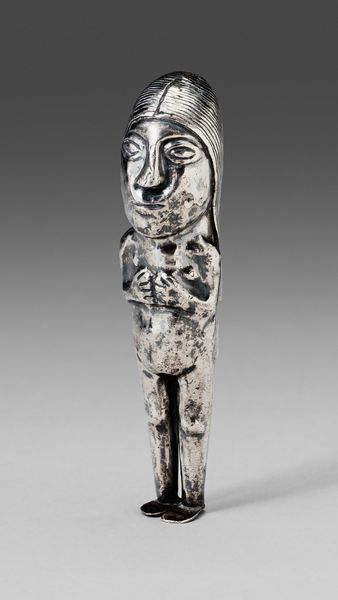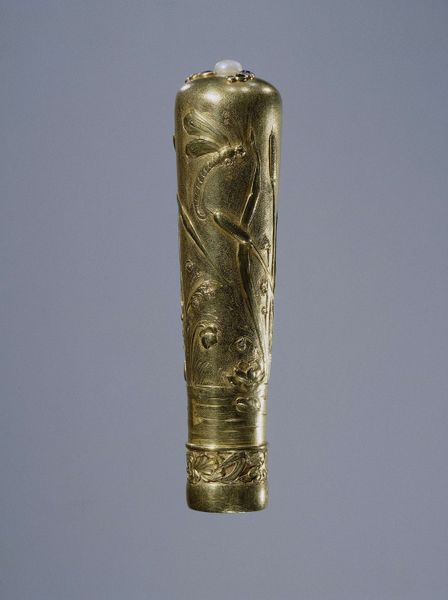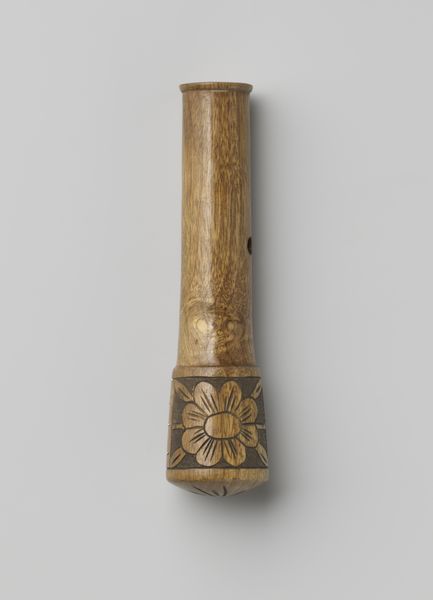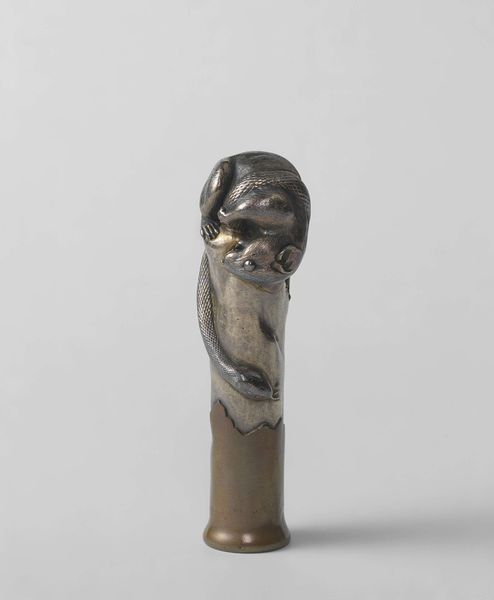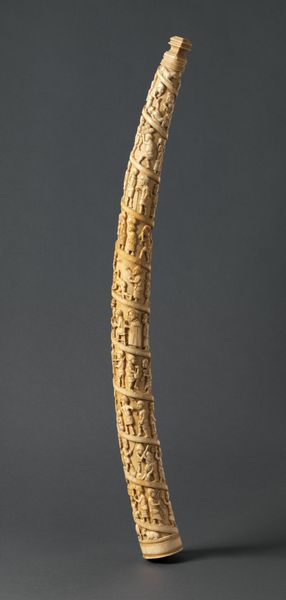
carving, sculpture, wood
#
carving
#
sculpture
#
figuration
#
sculpture
#
wood
#
indigenous-americas
Dimensions: H. 16 1/4 x W. 3 1/4 in. (41.3 x 8.3 cm)
Copyright: Public Domain
This small totem pole model was carved from argillite, a black carbonaceous shale, by Charles Edenshaw, a Haida artist from Haida Gwaii, British Columbia. Edenshaw created this model for sale, reflecting the growing interest in Indigenous art among Europeans and Americans in the late 19th and early 20th centuries. Totem poles traditionally served as heraldic crests, illustrating clan histories and important social narratives, so in this context, its meaning has changed. It is not functioning as a traditional totem pole, but as a commercial piece, even a kind of souvenir. The pole features stacked figures of humans and animals, each intricately carved. These figures represent crest animals and mythological beings significant to Haida culture. Edenshaw was a master of his craft, and his works became highly sought after. His art embodies both continuity and adaptation. His work preserved traditional Haida stories and artistic practices, while engaging with the demands of a changing world. Understanding the social and economic forces at play during Edenshaw's time is crucial to interpreting his art. Museum collections and archival records can help us uncover these layers of meaning.
Comments
No comments
Be the first to comment and join the conversation on the ultimate creative platform.

